Your Guide to Construction, Renovation, and Zoning Laws in New York
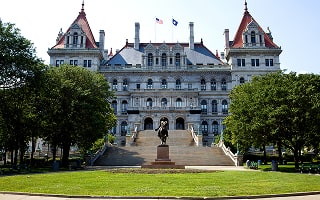
New York State and the Big Apple offer residents numerous amenities. However, before you invest in real estate in New York, you should understand all the construction, renovation, and zoning laws to ensure compliance. New York has over 4.1 million residential properties, including single-family, multi-family dwellings, and other types of residential structures. Within New York City, there are 3,705,000 housing units.
Property-related laws fall into two general categories: state-level and local (including town, city, county, and municipality). Each state divides property law responsibilities between these two entities; some laws fall under the jurisdiction of the state, while others fall under the jurisdiction of local government. Under each main category, there are many different rules and regulations to review.
State Level (Regulations & Codes)
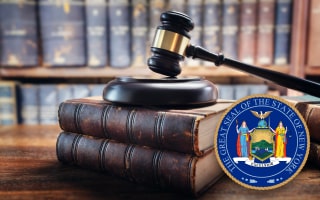
New York State has complex construction laws covering worker safety, building codes, and fair labor practices. Key areas include the Labor Law (regarding worker safety and training), the Uniform Code (governing building standards), and the Construction Industry Fair Play Act (addressing worker classification). Specific regulations also exist for noise control in construction, particularly in New York City.
A combination of state agencies and local authorities governs New York construction laws. The State's Department of State (DOS) plays a key role in developing and administering the Uniform Fire Prevention and Building Code and the State Energy Conservation Construction Code. Additionally, local governments, such as New York City, can adopt their own codes that supplement or exceed the state's requirements. The State Fire Prevention and Building Code Council is the entity responsible for making changes to the Uniform Code and Energy Code.
Construction

New York construction laws govern both new construction projects and renovations. They cover topics such as worker safety, building codes, employment on job sites, and noise control. These laws are extensive, with dozens of pages of fine details.
Some of the key construction laws in New York include:
Worker Safety
- Labor Law Sections 240 and 241 provide for reasonable and adequate protection of construction workers. This includes fall protection, scaffolding, safety equipment, and other safety measures to ensure the safety of all workers.
- Labor Law Section 200 requires construction sites to be safe and healthy for all workers.
- New York State law also requires construction workers to undergo specific safety training hours. In 2020, the number of hours increased to 40.
- Construction sites must have designated individuals trained as Construction Superintendents, Site Safety Coordinators, and Site Safety Managers. These people are responsible for ensuring the safety of building sites.
Building Codes
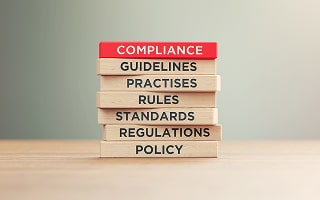
The Uniform Code establishes the minimum standards for building construction throughout New York State, except in New York City, which has its own building codes. The code is based on the International Building Code (IBC) 2018 with amendments and additions. Cities, towns, and villages typically enforce these building codes through the issuance of building permits and regular inspections.
-
Fair Play Act: All workers on a construction job are "assumed" to be workers unless they meet specific criteria. The Separate Business Entity law includes a test to determine if a sole proprietor or other entity is genuinely independent from the contractor. New York will impose penalties on employers who improperly classify workers to avoid paying overtime or workers' compensation insurance.
-
Noise Control: New York City has strict laws about noise control. The city generally permits construction work on weekdays between 7 a.m. and 6 p.m. Before starting a construction project or renovation in NYC, the company must design a Construction Noise Mitigation Plan and submit it to the authorities. If any work needs to be done outside the allowable hours, a contractor must obtain a permit and authorization from the Department of Buildings or the Department of Transportation.
-
Other Construction Laws: Home improvement contracts must be in writing, legible, and in plain English; the contractor must also furnish the customer with a copy. There are strict regulations regarding prompt payment on both public and private construction projects. Anti-indemnity statutes restrict the ability of parties to transfer liability in construction contracts.
Commercial Structures
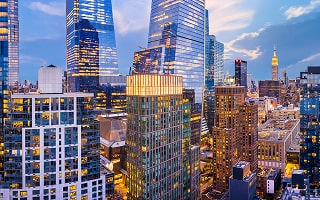
The New York construction codes set specific provisions for building, plumbing, mechanical, fuel/gas, and energy conservation in commercial structures. Along with a long list of building codes standards, construction companies must also comply with laws that protect workers, regulate pay, and enforce rules regarding working conditions. Some of the Department of Labor laws protecting construction workers include:
- Minimum Wage: New York mandates a minimum hourly wage for all workers, with potential for higher rates in certain areas or industries.
- Overtime Pay: Employees are entitled to overtime pay (typically 1.5 times their regular rate) for any hours worked beyond the standard 40-hour workweek.
- Prevailing Wage: Construction workers and some other public works employees may be entitled to prevailing wage rates, which can be higher than the minimum wage.
- Safe Working Conditions: Labor Law § 240, often referred to as the "Scaffolding Law", holds property owners and contractors liable for injuries resulting from inadequate safety measures, particularly those related to fall protection on construction sites.
The New York State Department of Labor (NYSDOL) investigates complaints of labor law violations and can impose penalties on employers who fail to comply with the law. Labor law violations can include unpaid wages, illegal deductions, minimum wage and overtime pay issues, as well as the denial of meal breaks. The Department of Labor protects all workers, including those who are undocumented or paid off the books.
Residential Structures
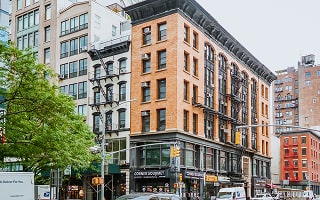
New York State residential building laws are primarily governed by the Residential Code of New York State (RCNYS), which is part of the broader New York State Uniform Fire Prevention and Building Code. This code regulates the construction and repair of one- and two-family structures, as well as townhouses with up to three stories. The RCNYS covers various aspects of residential construction, including structural components, fireplaces, insulation, mechanical systems, fuel gas, plumbing, and electrical systems. The State Energy Conservation Construction Code also plays a role in residential construction, ensuring that buildings meet energy efficiency standards.
The RCNYS is a comprehensive, stand-alone code specifically tailored for residential buildings, including single-family homes, two-family houses (also known as duplexes), and townhouses with three or fewer stories. It is a part of the larger New York State Uniform Fire Prevention and Building Code, which also includes codes for existing buildings, property maintenance, and energy conservation. Most types of construction, renovation, alteration, and repair projects of buildings in New York State require a building permit.
Some Key Areas Regulated Include:
- Structural Components: Ensuring the structural integrity of buildings.
- Fireplaces and Chimneys: Regulating the safe construction and installation of fireplaces and chimneys.
- Thermal Insulation: Specifying requirements for energy efficiency and heat retention.
- Mechanical Systems: Covering heating, ventilation, and air conditioning systems.
- Fuel Gas Systems: Regulating gas piping and appliances.
- Plumbing Systems: Addressing water supply, drainage, and waste disposal.
- Electrical Systems: Covering wiring, fixtures, and other electrical components.
The State Fire Prevention and Building Code Council is responsible for updating the Uniform Code, including the RCNYS, to incorporate new standards and address changes in state laws.
Safety Standards
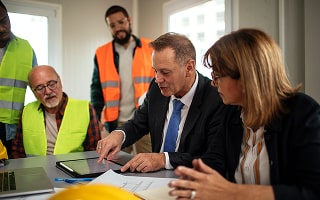
New York construction safety laws are primarily governed by Labor Law 240 (also known as the "Scaffold Law") and Labor Law 241, which mandate specific safety measures for construction and demolition work. These laws, along with Local Law 196 of 2017, require workers to undergo safety training, use the appropriate safety equipment, and implement comprehensive site safety plans, particularly on major construction projects.
Some of the highlights of safety laws in New York include:
- Labor Law 240 (Scaffold Law): This law holds owners and contractors strictly liable for injuries resulting from elevation-related hazards. It mandates that contractors provide adequate safety devices, such as scaffolding, safety lines, and harnesses, to protect workers from falls and other hazards.
- Labor Law 241: This law outlines general safety standards for construction, demolition, and excavation work. It requires employers to provide a safe working environment and implement measures to prevent accidents and injuries.
- Local Law 196 of 2017: This law focuses on safety training for construction workers and supervisors in New York City. It requires workers on major construction sites to complete 40 hours of safety training, while supervisors are required to complete 62 hours of training.
- OSHA Compliance: New York construction sites must comply with OSHA (Occupational Safety and Health Administration) standards, including the requirement for workers to complete the OSHA 10-hour course and supervisors to complete the OSHA 30-hour course.
- Local Law 196: This law requires major construction sites to have a site safety plan, a designated Site Safety Manager or Coordinator, and a Construction Superintendent.
- Fall Protection: This rule encompasses requirements for fall protection at elevations of 6 feet or more, the proper use of safety harnesses and lifelines, and the implementation of temporary structures, such as sidewalk sheds and pedestrian pathways, to protect the public.
- Training: Construction workers must receive proper training on the use of safety equipment, including safety belts, harnesses, and lifelines.
- Inspections: Construction sites are subject to regular inspections by safety officers and regulatory bodies to ensure compliance with relevant regulations.
- Work Zone Safety: Motorists are required to slow down, be alert, and exercise caution in work zones, especially when encountering construction vehicles.
Construction workers have the right to report unsafe working conditions to OSHA and to use their rights under the law without fear of retaliation.
Building Codes
New York State has a comprehensive set of building codes that dictate specific standards for structural integrity and safety. They are split into sections to make digesting the material easier. Within each section, you can drill down to see more detail. Some of the topics include:
- 2020 Building Code of New York State
- 2020 Existing Building Code of New York State
- 2020 Fire Code of New York State
- 2020 Mechanical Code of New York State
- 2020 Property Maintenance Code of New York State
- 2020 Energy Conservation Construction Code of New York State
- 2020 Fuel Gas Code of New York State
- 2020 Plumbing Code of New York State
- 2020 Residential Code of New York State
Asbestos Laws
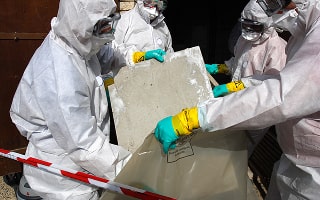
New York State and New York City have strict regulations governing the handling of asbestos in buildings, particularly during renovations and demolitions. Building owners are responsible for identifying asbestos-containing materials (ACM) and ensuring proper abatement procedures are followed by licensed contractors. Failure to comply can result in significant penalties and legal repercussions.
Some of the highlights of this law include:
- Asbestos Survey: Before any work that might disturb ACM, a certified asbestos investigator must survey the site to identify and assess the presence of asbestos.
- Licensed Abatement Contractors: If ACM is found, it must be abated by a licensed asbestos abatement contractor.
- Notifications and Filings: Contractors must provide the New York City Department of Environmental Protection (DEP) and the Department of Labor with a 7-day advance notice of any asbestos abatement projects.
- Air Monitoring: Following abatement, air monitoring is required to ensure the area is safe for reoccupation.
- Penalties for Non-Compliance: Failing to comply with asbestos regulations can result in substantial fines, ranging from $1,200 to $10,000 per infraction, and may also lead to the suspension or revocation of licenses.
- Code Rule 56: The New York State Department of Labor's Industrial Code Rule 56 (12 NYCRR Part 56) covers the handling and management of asbestos, including licensing, certification, and abatement procedures.
- EPA Ban on Chrysotile Asbestos: The EPA has finalized a ban on the ongoing use of chrysotile asbestos, the last type of asbestos still sold in the US.
Contractor Licensing Laws
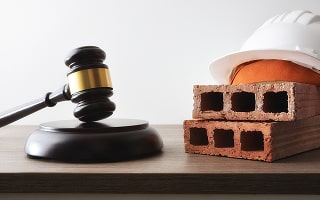
New York State does not have a statewide licensing law for contractors. However, individual municipalities handle licensing, and they require licensed professionals to work on construction and renovation jobs.
In New York City, home improvement contractors are required to be licensed by the Department of Consumer Affairs if the total cost of the work exceeds $200.
Contractors and subcontractors working on public projects or covered private projects must register with the NYSDOL. Registration with the NYSDOL is required before submitting bids or commencing work on covered projects.
Written contracts are required for home improvement work exceeding $500, which must include specific details about the project and a notice regarding the right to cancel the work.
Contractors and subcontractors can register through the NYSDOL's Contractor Registry portal within the Management System for Protecting Worker Rights (MPWR). Once registered, their Certificate of Registration is good for two years. Contractors must renew their licenses within 90 days of the expiration date.
Unlicensed contractors cannot enforce contracts or seek payment for their work.
Insurance & Bonds
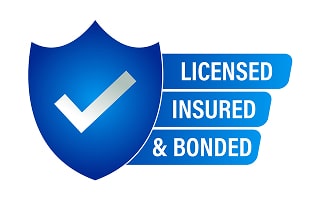
New York requires contractors to hold specific levels of insurance and bonds, especially when working on public projects. Contractors or contracting firms must typically carry a minimum of $1 million per occurrence and a total of $2 million in aggregate liability. They must also carry workers' compensation insurance for work-related injuries and lost wages. Specific projects require a minimum limit of professional liability insurance at $2,000,000 per loss. Depending on the project, contractors may also need commercial property insurance, commercial auto insurance, and an umbrella or excess liability insurance policy.
Many construction projects, especially public works, require surety bonds to guarantee performance, payment, and/or to ensure a contractor's license is valid. Some also require bid bonds to ensure that bidders on public projects will enter into the contract if they are awarded it. Performance bonds are also necessary to ensure the project's completion in accordance with the contract terms. Sometimes, payment bonds are needed to ensure subcontractors and suppliers are paid for their work on the project. Additionally, license and permit bonds may be required for some contractors to operate legally in specific municipalities or for certain types of work.
Public Works Contracts/Public Bidding
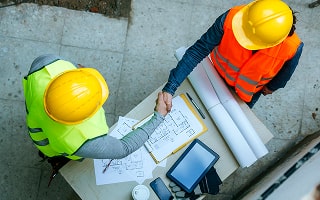
In New York, public works contracts for projects exceeding $35,000 generally require a competitive bidding process, with the contract awarded to the lowest responsible bidder. This process involves advertising the project, receiving bids, evaluating them based on criteria such as price, responsiveness, and responsibility, and finally awarding the contract. The details of this process are as follows:
Project Identification and Design
- A public agency identifies a need for a public works project.
- A designer prepares the project's plans and specifications.
The Bidding Process
- The project is advertised, typically through publications like the City Record online.
- A conference may be held to clarify the project requirements for potential bidders.
- Interested contractors submit sealed bids by a specified deadline.
- Bids are opened and evaluated based on criteria such as price, responsiveness (whether the bid meets the project requirements), and responsibility (the contractor's ability to complete the project).
- The apparent low bidder may need to demonstrate their responsibility by submitting documents, such as the NYSDOT Vendor Responsibility Questionnaire (CCA-2).
- The contract is awarded to the lowest responsible bidder.
- The award is contingent upon the bidder's successful completion of the post-qualification process.
- The contract is typically registered with the Office of the Comptroller.
Renovations
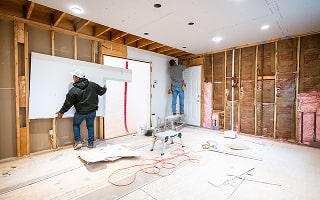
New York State has an extensive set of rules and regulations regarding home renovations, including requirements for written contracts, permits, and licensing for contractors. These laws are to protect homeowners and ensure that renovation work is safe and compliant.
Some key highlights of these laws are:
- Written Contracts: A written contract is required for all home improvement work exceeding $500, outlining details like contractor information, work description, materials, start and completion dates, and cancellation rights.
- Permits: Permits are required for many jobs, including those that involve structural changes, plumbing, electrical work, or changes to occupancy.
- Licensing: Contractors operating in New York City, Suffolk, Nassau, Westchester, Putnam, and Rockland counties are required to hold a valid license.
- Payment Schedules: Homeowners are encouraged not to pay the full price upfront, but to establish a payment schedule with incremental payments as work progresses and withhold the final payment until completion and all inspections are finalized.
- Escrow Accounts: Contractors may be required to deposit payments received before work completion into an escrow account.
- Insurance: New York State advises property owners to verify that their contractor is appropriately insured to protect against potential liability for injuries or property damage.
- Individual Apartment Improvements (IAIs): Landlords can increase rents for IAIs in rent-regulated apartments, subject to specific rules and documentation requirements.
All renovations must adhere to the New York State Department of State, Division of Building Standards and Codes. The New York State Energy Research & Development Authority (NYSERDA) provides information on energy efficiency programs and incentives for building renovations. The New York State Attorney General's Office offers resources for consumers on home improvement contracts, contractor licensing, and tenant rights.
Environmental Laws
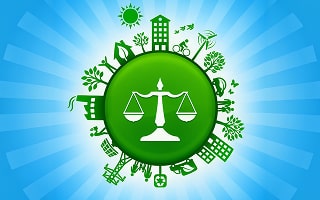
New York State has numerous environmental laws and regulations governing construction activities, which aim to minimize environmental impact and promote sustainability. These laws are responsible for managing stormwater, waste management, emissions control, and promoting energy efficiency.
Some details of these laws include:
-
Stormwater Management: Construction projects that disturb one or more acres of soil require a State Pollutant Discharge Elimination System (SPDES) General Permit for Stormwater Discharges from Construction Activity. Certain contractors and inspectors are required to complete a DEC-endorsed four-hour training session on erosion and sediment control before commencing work on construction projects.
-
Waste Management: State legislation (e.g., Assembly Bill A3153) may mandate contractors to recycle a specific percentage of construction and demolition waste. Regulations (Subpart 361-5) govern the handling and recovery of construction and demolition (C&D) debris. Land clearing debris, which includes vegetative matter and soil from land clearing activities, is now defined separately from construction and demolition (C&D) debris.
-
Emissions Control: Starting December 31, 2025, new buildings seven stories or less in height will be prohibited from installing fossil-fuel equipment, with exemptions for larger commercial and industrial buildings. The Climate Leadership and Community Protection Act (CLCPA) mandates a significant reduction in greenhouse gas emissions by 2050, which in turn influences building design and construction practices. The GreenNY Council Guidance focuses on reducing embodied carbon in construction materials through data collection and the use of Environmental Product Declarations (EPDs).
-
Energy Efficiency: New York's State Energy Conservation Construction Code, contained within Title 19 of the New York Codes, Rules and Regulations (19 NYCRR), sets standards for energy conservation in building construction.
Additionally, the State Environmental Quality Review Act (SEQRA) requires all government agencies to assess the environmental, social, and economic impacts of a project during the review process. The Environmental Justice Sitting Law (EJSL) requires agencies reviewing projects under SEQRA to evaluate potential disproportionate pollution burdens on disadvantaged communities.
Solar Regulations
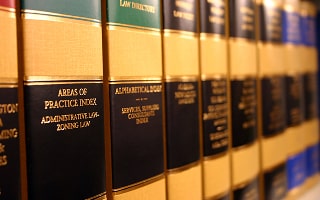
Solar system installations and construction work in New York State require permits and compliance with the National Electrical Code (NEC) and local building codes. Additionally, specific projects, especially those exceeding 25 MW, fall under a state-level siting process.
Some of the fine details of these laws include:
-
Electrical Permit: An electrical permit is required before installing a solar electric (photovoltaic) system to ensure proper wiring, inverters, and grid connection.
-
Construction Permit: A construction permit is also required to verify the structural integrity of the installation, ensuring the roof can support the system.
-
Special Use Permit: Certain special use permits may be required for large-scale solar projects.
-
State-Level Sitting Process: Projects exceeding 25 MW (and some between 20-25 MW) are reviewed by the Office of Renewable Energy Siting (ORES).
-
Inspections: Local code officials conduct inspections after construction to ensure compliance with building codes.
All solar installations must comply with the National Electrical Code (NEC) for electrical safety. Solar panels should have anti-reflective coatings to minimize glare and enhance visibility. You must also have plans for decommissioning (i.e., the removal of the system). Specific guidelines exist for solar projects on agricultural land, including topsoil management and restoration. Zoning restrictions can also affect solar installations (location, size, appearance).
New York has a net metering law that allows homeowners to send excess solar energy back to the grid for credit. Regulations also address community solar projects, which would enable multiple customers to share the benefits of a solar installation. HOAs cannot unreasonably restrict homeowners' ability to install solar panels.
Gas/Oil

As of 2026, New York is banning the use of all fossil fuels (Gas/Oil) in construction, meaning that all new structures must use electric appliances and heating systems. The new law aims to reduce carbon emissions and promote the use of cleaner energy sources.
The ban will be implemented in a phased approach, with buildings under seven stories starting on December 31, 2025, and taller buildings from 2026 to 2029. The new law applies to new construction, including residential and commercial buildings, and covers fossil fuel equipment such as stoves, furnaces, and water heaters.
There are exceptions, including emergency backup power systems, manufactured homes, and certain types of buildings such as manufacturing facilities, hospitals, and critical infrastructure.
The ban is part of New York's broader strategy to combat climate change and reduce greenhouse gas emissions. This initiative is expected to significantly reduce carbon emissions from the building sector, which is a significant source of pollution in the state. The transition to all-electric new construction will necessitate the use of technologies like heat pumps and induction ranges.
Before 2026, the state relied on the New York Gas Code 2024.
Electricity

New York State has regulations in place for electricity usage in new construction, particularly regarding the shift to all-electric buildings. These regulations, part of the state's broader climate goals, aim to reduce reliance on fossil fuels and promote energy efficiency. The New York State Energy Research and Development Authority (NYSERDA) is the government agency responsible for moving towards clean energy and a low-carbon future. New York's Climate Leadership and Community Protection Act (Climate Act) sets the statewide standards and targets for renewable energy generation and greenhouse gas emissions reduction.
Some of the highlights of New York's electricity regulations include:
-
The All-Electric Buildings Act: This law requires new buildings to be all-electric, meaning they must use electricity for heating and appliances, rather than fossil fuels such as natural gas or oil. The implementation is phased in based on building height, with smaller buildings (under seven stories) required to comply starting in 2026 and larger buildings (over seven stories) beginning in 2029. Certain building types and uses are exempt, including some commercial kitchens, hospitals, manufacturing facilities, and agricultural buildings. The law primarily affects new construction and does not require retrofitting existing buildings. New York City's Local Law 154 is a key component of this initiative, requiring all new buildings to be all-electric, with phased implementation based on building height.
-
Energy Conservation Construction Code (ECCCNYS): The ECCCNYS addresses energy conservation in all aspects of both commercial and residential construction. It includes separate provisions for commercial and residential buildings, with different requirements based on the building's height and occupancy type. Certain building types, such as residential buildings with three stories or fewer, have separate energy conservation requirements.
-
NYStretch Energy Code: NYStretch, a state-wide energy code, may have specific requirements for ventilation systems in new construction, which could conflict with the Uniform Code.
-
Uniform Code: The Uniform Code, which includes the Energy Code, takes precedence over conflicting provisions in other local or state laws.
Article VII of the NYS Public Service Law governs the siting and construction of major utility transmission facilities, which may be relevant to the electrical infrastructure needed to support new construction.
Government Housing Programs
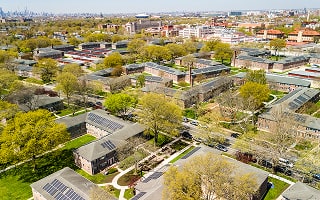
New York State offers a variety of government-funded housing programs aimed at helping low-income individuals and families, those experiencing homelessness, and those with disabilities. These programs include rental assistance, public housing, and support for homeownership.
Some of the programs offered in New York State include:
- Section 8 Housing Choice Voucher Program: This program, administered by local Public Housing Authorities, helps eligible low-income families, seniors, and individuals with disabilities afford decent, safe, and sanitary housing.
- New York City Rental Assistance Programs: CityFHEPS, LINC, and SEPS are rental assistance programs that help individuals and families in shelters, as well as those at risk of homelessness, move into permanent housing.
- Emergency Rental Assistance Program (ERAP): ERAP provides financial assistance to eligible New Yorkers to cover rental arrears accrued during the COVID-19 pandemic.
- New York City Housing Authority (NYCHA): NYCHA provides and manages public housing for low and middle-income residents of New York City. Public housing refers to housing owned and managed by public entities, such as NYCHA, where rent is often based on a percentage of the tenant's income.
- NYS HOME Program: This program funds various activities, including acquisition, rehabilitation, or construction of affordable housing, as well as assistance for low-income homebuyers.
- RemodelNY: is a program that may offer assistance for qualified renovations in a historic home.
- Affordable Housing Corporation (AHC): AHC provides grants to organizations to help subsidize the cost of new construction or renovation of homes for low and moderate-income families.
- Solutions to End Homelessness Program (STEHP): STEHP provides funding for a range of services to support individuals and families experiencing homelessness, including shelter, housing, and supportive services, as outlined by the NYS Office of Temporary and Disability Assistance (OTDA).
- New York State Supportive Housing Programs (NYSSHP): NYSSHP provides funding for supportive housing, which combines affordable housing with supportive services for individuals with disabilities or other special needs.
- Empire State Supportive Housing Initiatives (ESSHI): ESSHI provides funding for supportive housing, similar to NYSSHP.
Property Tax Credits and Incentives
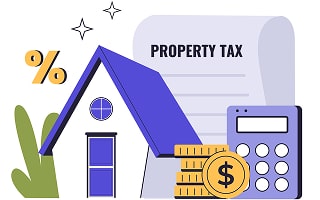
New York State offers several property tax credits and incentives to provide relief to eligible homeowners and businesses. These programs help alleviate property tax burdens for various groups, including seniors, individuals with disabilities, veterans, and those investing in renewable energy sources. Eligibility and the application processes vary by program. The state administers some of these benefits, while others are managed at the local level. Application deadlines differ by municipality.
For Homeowners
-
School Tax Relief (STAR) Program: Provides property tax relief on school taxes. New homeowners or those who registered after 2015 receive a check. The basic STAR credit is available to homeowners with a household income of $500,000 or less. The Enhanced STAR Credit is available to seniors (65 years or older) with a household income of $107,300 or less for the 2025-2026 school year. Homeowners who received the exemption before 2015 can continue to receive it as a tax bill reduction.
-
Senior Citizen Homeowners' Exemption (SCHE): Offers up to a 50% property tax reduction for eligible seniors (65+) based on income.
-
Disabled Homeowners' Exemption (DHE): Provides up to a 50% property tax reduction for eligible homeowners with disabilities based on income.
-
Real Property Tax Credit: Available to residents with household income of $18,000 or less who pay property taxes or rent. The credit amount varies by age and can be claimed by filing Form IT-214.
-
NYC Enhanced Real Property Tax Credit: For NYC residents with a household income of less than $200,000 who pay property taxes or rent, they may be eligible for a credit of up to $500. To apply, use Form NYC-208.
-
Veterans Property Tax Exemptions: Veterans and surviving spouses may be eligible for exemptions on various local property taxes. This includes the Alternative Veterans Exemption, Cold War Veterans Exemption, and Eligible Funds Veterans Exemption.
-
Property Tax Benefits for Renewable Energy: These include the Solar Property Tax Exemption, the NYC Solar Property Tax Abatement, and the Green Roof Abatement.
For Businesses
-
Investment Tax Credit: For businesses investing in machinery, buildings, or equipment.
-
Employment Incentive Credit: For businesses creating jobs that qualify for the Investment Tax Credit.
-
Manufacturer's Real Property Tax Credit: Provides a credit equal to 20% of eligible real property taxes for businesses primarily engaged in manufacturing or related activities.
-
Excelsior Jobs Program: Offers tax credits for job creation and investments in growth projects, including those focused on environmental sustainability.
-
Other Environmental Sustainability Incentives: Includes credits for alternative fuels, electric vehicle charging property, clean heating fuel, and conservation easements.
Contact your local assessor or visit the New York State Department of Taxation and Finance website for current information and forms.
Local Level (Permits and Regulations)
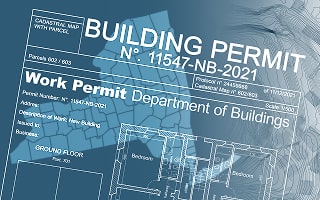
New York State sets the building codes and minimum safety standards. They allow individual municipalities (such as towns, cities, and counties) to further strengthen these laws by amending them. Local jurisdictions also have the responsibility of enforcing building codes and ordinances. They achieve this through the issuance of building permits, inspections, and adherence to zoning regulations.
Building-Friendly Areas of New York
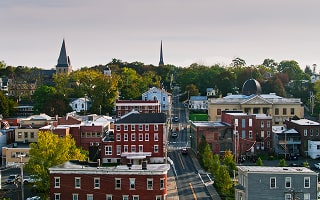
Since each individual area sets its own building standards and issues permits as it sees fit, there are bound to be areas that are easier to build in and those that are more challenging to build in. In New York, generally rural areas, particularly those within the Catskills and Hudson Valley, tend to have more flexible building regulations. Some examples are Wayne, Livingston, and Ontario counties in the Finger Lakes region. All of New York State is governed by the NYS Uniform Building Code and Energy Code, so even in less stringent areas, these standards must still be met.
Tiny houses have different regulations from standard single-family homes. Consult your local building office to find more areas that are easier to build in.
Where to Obtain New York Building Permits
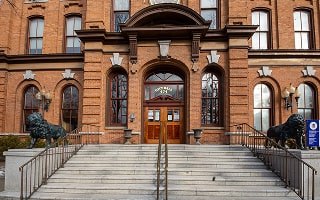
New York's building code is enforced at the local level by towns, counties, and cities. Typically, individuals and contractors can obtain building permits through the local building department. If you are in New York City, you can get one through the Department of Buildings (DOB).
Some links to other building departments in New York include:
- City of Albany Buildings and Regulatory Compliance
- City of Buffalo Building Code
- City of Rye Building Department
- Rome, New York Code Enforcement
- Town of Bethlehem Building Division
- Town of Chester Building Department
- Town of Hempstead Building Department
- Town of Ithaca, New York State Building Codes
The permitting process in New York looks like the following:
- Determine the correct jurisdiction to apply through.
- Many local jurisdictions use the online portal called DOB NOW:Build for permitting.
- If your area does not allow online applications, you can visit the building department in person during regular business hours.
- You must supply the building department with details about the project (building plans, blueprints, materials lists, contractor license, etc.).
- You must also pay the building permit fee.
- Once approved, you can schedule your first inspection.
During the permitting process, the building inspector must inspect the work being performed. They may do this before, during, and after the project to ensure the work complies with all local building codes, thereby ensuring the safety of people. Depending on the city or county's rules, you may schedule your inspections through the online portal, by phone, or by email.
Zoning Laws
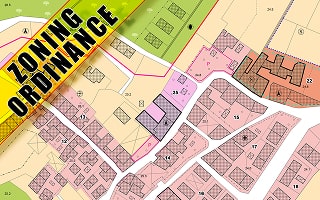
Cities, towns, and villages in New York establish their own zoning laws. These rules regulate land use and development by defining allowable uses and design requirements for properties. These laws are crucial for maintaining community character, ensuring public safety, and managing growth.
Zoning regulations are enacted by local governments, not the state, although the state provides the enabling legislation. Zoning laws must be adopted in accordance with a comprehensive plan, which outlines the community's long-term vision for land use and development. Communities are typically divided into various zoning districts (e.g., residential, commercial, industrial) that dictate permitted uses, building heights, lot sizes, and other development standards. Local building departments enforce zoning restrictions.
Zoning laws can be amended through a process involving public hearings and approvals by local governing bodies. Zoning boards of appeals can grant variances (exceptions to zoning regulations) or special permits for uses that don't strictly conform to zoning rules but may be appropriate under certain circumstances.
New York City has a ZoLa platform for the public to use for researching zoning regulations (to zone in on specific properties) and viewing a land use map.
In recent years, NYC has been undertaking a series of zoning reforms under the "City of Yes" initiative to update zoning regulations and encourage economic development.
Some of the zoning designations used for land throughout New York include:
-
Residential (R): Residential includes single-family homes, apartments, and other types of dwellings, such as duplexes and condominiums.
-
Commercial (C): Commercial zoning is reserved for businesses such as retail, offices, and service-oriented establishments.
-
Manufacturing (M): These districts are for industrial and manufacturing uses, often located away from residential areas.
-
Special Purpose: These districts are created to address specific neighborhood needs or development goals, such as the Hudson Yards District or the Special Midtown District.
In addition to the classifications above, zoning districts are further divided into low-density, medium-density, and high-density areas, which define building heights, lot coverage, and open space requirements. Coastal areas are designed to limit density and protect people in the event of floods due to climate change.
Related Links and Enforcement Offices
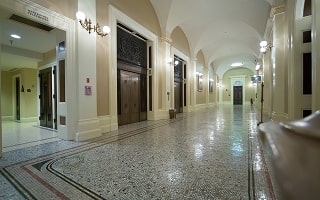
When it comes to New York construction, renovation, building, and housing regulations, many government departments and agencies standardize, regulate, and enforce building rules. New York's laws are split relatively evenly between state and local offices. New York State sets the minimum standards and grants local entities the authority to modify the rules and even further restrict certain activities.
The links below provide detailed information on the state's construction, zoning, renovating, and housing rules.
Other Helpful Links
- New York Department of State
- Uniform Fire Prevention and Building Code
- 2020 NY Energy Conservation Construction Code
- Construction Industry Fair Play Act
- New York Building Standards and Codes
- New York Labor Standards
- Residential Code of New York State (RCNYS)
- New York Building Codes
- New York Department of Health - Asbestos Laws
- New York City Department of Environmental Protection (DEP)
- New York State Attorney General
- New York City Department of Buildings
- New York State Energy Research & Development Authority (NYSERDA)
- State Pollutant Discharge Elimination System (SPDES)
- New York State Solar Guidebook
- Office of Renewable Energy Sitting
- New York State Department of Taxation and Finance